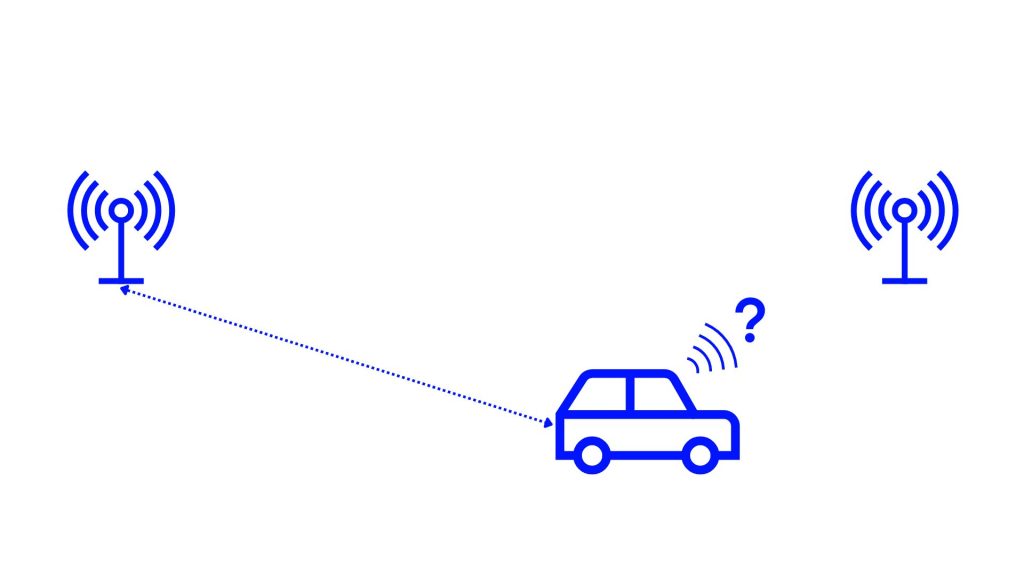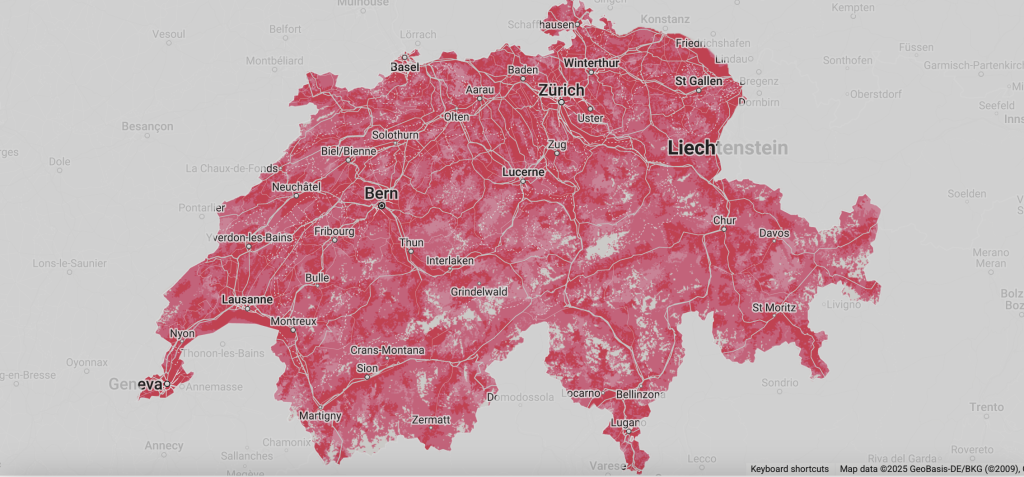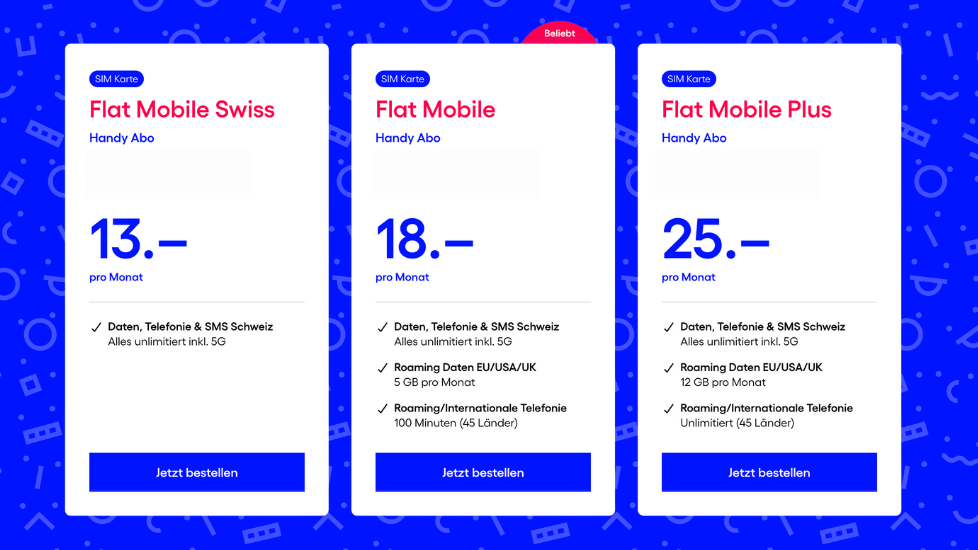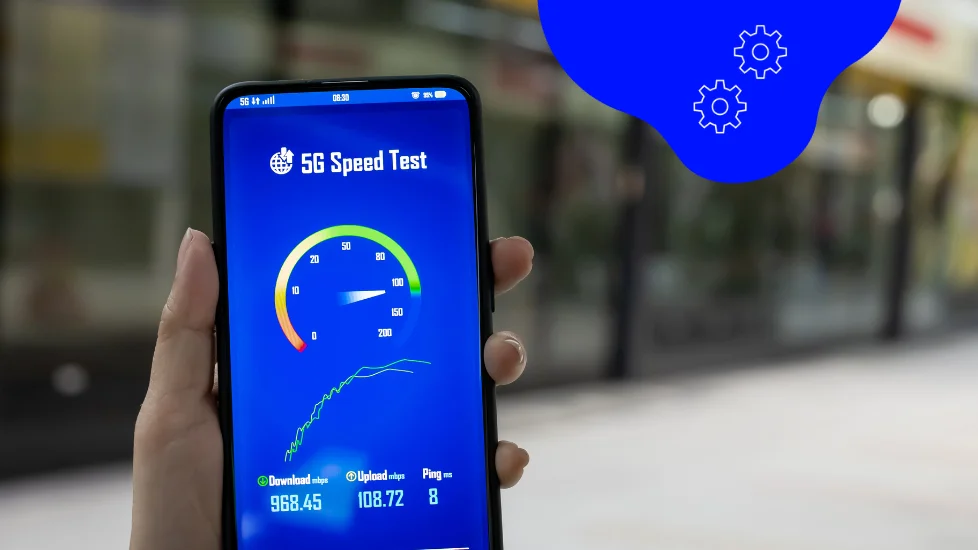Mobile internet for everyone and everything
“Why Have I Got No Signal?” – Cell Phone Reception Explained
Mobile internet has become an integral part of our everyday lives. We rely on everything working smoothly and as seamlessly as possible, and mobile providers also sell their tariffs as simple and reliable. When you stream music as you go about your daily life, highly complex technical processes take place in the background and sometimes problems arise. You may have experienced this: no reception, the music suddenly stops. But why is that?
This Is How Your Smartphone Connects to the Internet
Don’t worry: we’ll keep it simple. When you’re on the go with your smartphone, you’re not just carrying a computer with you, but also an antenna, a SIM and a modem. The data connection is established by the antenna and modem connecting to the nearest antenna from your mobile service provider. The SIM card identifies you to the antenna as a paying and therefore authorized user.
If there are no obstacles or too much distance between your smartphone and this antenna, you will have good reception and a stable internet connection. As soon as you move and get further away from the antenna, your smartphone will automatically search for another antenna from the provider that may be closer. If one is found, the connection to the first antenna is disconnected and a new connection is established with the nearest antenna. This process is also called a ‘handover’ and you usually don’t notice it.
As long as you are within range of an antenna, you can surf, stream, text or call without interruption.
Not Everything Always Goes Smoothly – These Factors Can Affect Your Reception
In Switzerland, we have the privilege of benefiting from almost nationwide coverage by the antennas of the three major network operators. In theory, you should have great internet everywhere. In rare cases, however, the experience can be different. Sometimes the internet is slow, sometimes it is completely down (even with full reception bars). This can be caused by a number of scenarios.
Scenario 1: The Handover Process Has Not Worked
This happens more often than you might think, but it can also be solved very easily. When you move, it can happen that your smartphone does not connect to the nearest antenna, but instead maintains the connection to an antenna that is moving away. This can have different reasons, but is usually due to the device itself, i.e. your cell phone.

In such cases, it is sufficient to disconnect and reconnect the connection manually. The easiest way to do this is to switch the flight mode on and off again. Then your smartphone will reconnect and usually also to the nearest antenna. If that doesn’t work either, a complete restart of the device may help.
Scenario 2: Reception Is Blocked
As already mentioned, there should ideally be no obstacles between you and the antenna. Of course, this is difficult to avoid in everyday life, and fortunately the connection also works when there is more than just air between you and the antenna.
Problems only arise with materials that block the signal. These include thick reinforced concrete walls in particular, but also metallic obstacles or well-insulated glass (for example in Minergie-standard buildings). If you have such material between you and the antenna, your reception may be limited or blocked. Unfortunately, the only thing that will help here is to change your location, because no matter which provider you use: Where the signal can’t get through, there’s no reception. No matter who operates the antenna.
Scenario 3: The Antenna Is Overloaded
Not only your smartphone, but also those of all your provider’s other customers connect to the corresponding antenna cells. However, the provider’s antenna does not have infinite capacity, but can only transmit a certain amount of data at once. So that all users remain connected despite this, the bandwidth is shared.


For you, this can mean that your connection slows down or even fails completely for a short time if too many people communicate via the same antenna at the same time. This phenomenon is most often experienced at train stations during rush hours, at major events, or around midnight on New Year’s Eve.
Which Network Is the Best?
Opinions are divided on this question, and each of the three mobile phone networks in Switzerland has fans among its users who claim that their respective network is the best in Switzerland. In principle, Switzerland is almost completely covered by mobile phone networks, and each of the networks has stronger and weaker areas.
In the end, it depends on how and, above all, where you want to be connected. Because we know that mobile phone connections are subject to local fluctuations and are not equally strong everywhere, we offer the first month for free for new customers. So you can test in peace how well our SIM cards meet your requirements.

The fact that occasional connection problems stand out to us despite their rarity also suggests that the Swiss mobile communications landscape meets a high level of service and that mobile data applications are possible practically everywhere without any problems. These are the best conditions for the further development of the infrastructure and, of course, for your experience as a user.
Discover Our Other News Articles

The Development of Our Ideal Cell Phone Plans for Switzerland
The path to the current Trio Flat Mobile Swiss, Flat Mobile, and Flat Mobile Plus cell phone plans is also an example of how Digital Republic wants to function as a provider and where its priorities lie. We have quickly transformed ourselves from a pure data SIM provider to a cell phone plan provider. And we have completely rethought the development process.

The Affordable Mobile Provider With Award-Winning Service
When it comes to mobile providers in Switzerland, the wheat is often separated from the chaff when it comes to price. Either you pay little for your subscription and do without services like support or 5G, or you go to one of the big providers and pay more than you might like. At Digital Republic, you get both!

Why 5G Is Not Always Equally Fast
Sometimes fast, sometimes slow, sometimes suddenly 4G again. The network indicator on your smartphone suggests that it is connected to the internet via either 4G or 5G. In fact, a complex mechanism and a lot of communication between your smartphone and the network is taking place in the background to ensure that you always have the best possible connection.
